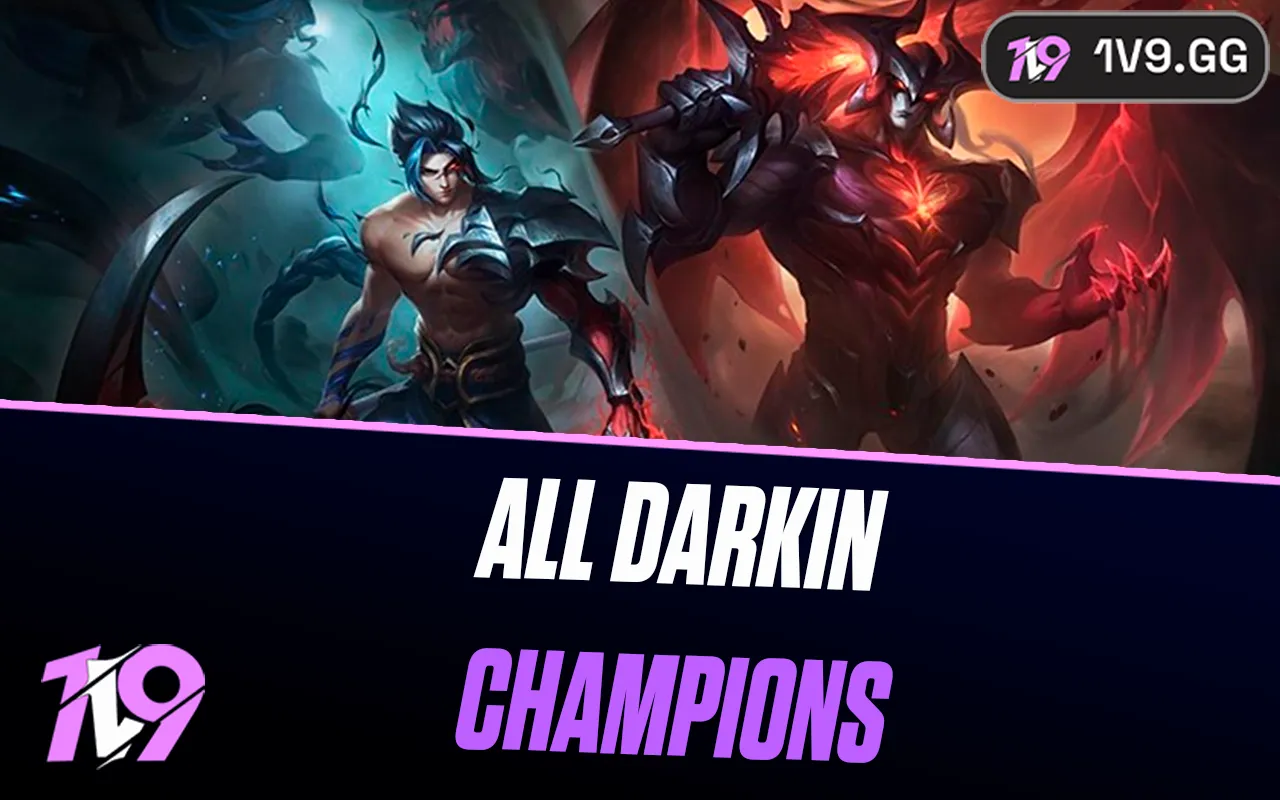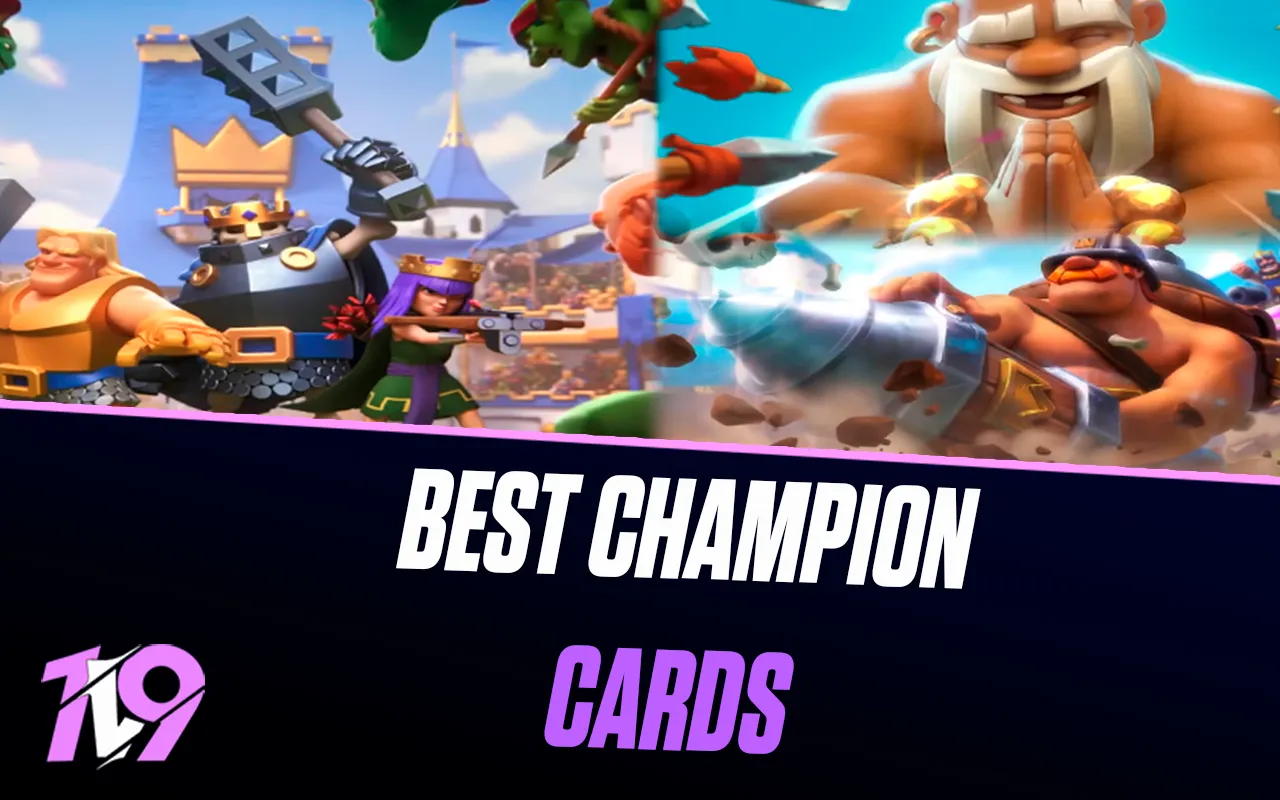
Rainbow Six Siege: All Maps, Ranked
Rainbow Six Siege has cemented itself as one of the most enduring competitive first-person shooters, offering intense tactical gameplay that rewards strategy and precision. One of the standout features of the game is its unique map design, setting it apart from other FPS titles. With destructible environments and utility placements playing a critical role, the maps in Siege are crafted to emphasize strategic planning and adaptability.
For new players and veterans alike, mastering these maps can take weeks, months, or even years. The complexity of each map, paired with its dynamic destructibility, offers an ever-changing battlefield. To help you get an edge, we’ve compiled a comprehensive guide to all the current maps in Rainbow Six Siege—25 at the time of writing. Whether you’re looking to dominate ranked matches or just improve your map knowledge, this guide will break down the highlights and challenges of each map. Let’s dive in!
#25: Tower

Tower is widely regarded as one of the least effective maps for tactical gameplay in Rainbow Six Siege. While its aesthetic design and the immersive invasion scenario for attackers bring a unique touch of realism, the map falters significantly from a competitive perspective.
Attackers are severely limited by the rappel-only entry points, making initial pushes predictable and risky. Meanwhile, the abundance of destructible walls and long sightlines creates an equally precarious situation for defenders. The map’s sprawling layout and numerous open areas leave players exposed from multiple angles, leading to chaotic engagements rather than calculated plays. These design flaws make Tower a visually appealing but deeply frustrating map to navigate, whether you’re on offense or defense.
#24: Yacht

Yacht offers a more balanced experience than maps like Presidential Plane and Tower, but it still struggles with several design flaws that impact competitive play. One of the most glaring issues is the bomb site on the top level, which is poorly positioned with multiple entry points—two doors, two windows, and a hatch from the lower floor—all packed into a small area. This layout makes it nearly impossible for defenders to hold the site effectively, as they are overwhelmed by attackers approaching from all directions.
Additionally, Yacht includes numerous runout points that grant defenders direct sightlines to attacker spawn locations. These spawn peeks often lead to unfair early eliminations, disrupting the flow of the round. While the map’s aesthetic and layout may be visually appealing, its structural imbalances make it a frustrating choice for competitive players.
#23: Presidential Plane

Presidential Plane is another map that boasts a visually realistic and immersive design, but it falls short when it comes to fair competitive gameplay. Two significant flaws prevent it from being a balanced experience for players.
The first issue lies with the plane’s windows, which are highly susceptible to Kali’s sniper rifle. With her 12x scope and long-range precision, Kali becomes a dominant choice on this map, easily eliminating defenders from a safe distance. Compounding this problem, both top-floor bomb sites are perilously close to these windows, forcing defenders into crouched or prone positions to avoid exposure, limiting mobility and tactical options.
The second major flaw is the abundance of defender runout points. These allow defenders to quickly reach vantage positions near attacker spawn locations, creating opportunities for frustrating spawn-kills. The lack of adequate cover for attackers at spawn points makes it nearly impossible to counter such aggressive plays effectively.
While Presidential Plane shines in its thematic and aesthetic appeal, its gameplay imbalances make it a challenging map for competitive play.
#22: Stadium

Stadium is an ambitious attempt to merge elements from two fan-favorite maps, Coastline and Border, while introducing unique features like glass walls and rappel spawns for attackers. On paper, this combination seems like a recipe for success, but the execution falls short, resulting in a map that feels chaotic and unbalanced.
The issue lies in the map’s failure to replicate the strategic depth of Coastline and Border. While Stadium borrows bomb site locations from these classic maps, it neglects the intricate corridors and well-thought-out object placements that make those maps so beloved. This lack of attention to detail leaves Stadium feeling disjointed, with its layout often creating more confusion than opportunity for tactical play.
Despite its creative elements, such as the semi-transparent glass walls, which offer new dynamics, and unique attacker rappel options, Stadium doesn’t quite capture the balance and flow required for competitive matches. It’s a map that promises a lot but ultimately struggles to live up to its inspirations.
#21: Bartlett University

Bartlett University stands out as one of the most iconic maps in Rainbow Six Siege, remembered fondly by many players despite its glaring flaws. Its absence from the active Quick Match rotation has left some fans disappointed, as the map offers a nostalgic charm and a visually stunning design.
However, Bartlett University struggles with significant gameplay challenges. The map’s expansive open areas, large lobbies, and long sightlines put defenders at a disadvantage, especially since most defensive operators lack access to long-range scopes. These design choices make it difficult to hold key positions effectively, forcing defenders into high-risk situations.
Currently, Bartlett University is only available in co-op or Lone Wolf modes, leaving competitive and casual players without a chance to revisit this striking yet flawed battleground. Its aesthetic appeal is undeniable, but its gameplay mechanics leave much to be desired for balanced team play.
#20: Kanal

Kanal’s intricate design and unique layout make it a memorable map, but it’s plagued by fundamental issues that have yet to be addressed. The map consists of two distinct buildings connected by two bridges, and while this setup adds a tactical layer, it also creates significant challenges—especially for defenders.
The reliance on the bridges for movement, particularly by roamers, becomes a major disadvantage when attackers take control of these key pathways. Once the bridges are compromised, defenders are left with limited options to rotate effectively, severely hampering their ability to retake control.
Additionally, Kanal is notorious for its spawn-kill opportunities. Defenders have several advantageous runout points that allow them to pick off attackers early, creating frustration for the attacking side. Despite its potential, these persistent design flaws prevent Kanal from achieving its full competitive balance.
#19: Favela

Favela edges out Stadium because it embraces its chaotic nature and unique identity. Unlike Stadium, which struggles to find its purpose, Favela knows exactly what it’s meant to offer: fast-paced, unpredictable gameplay. However, playing on the defensive side here remains a challenging experience due to the abundance of destructible walls and floors—a hallmark of this map’s design.
Even after its rework, Favela stayed true to its roots. The changes brought more balance, but the map still leans heavily in favor of attackers. With an overwhelming number of entry points and limited ways for defenders to cover them effectively, coordinating a solid defense requires exceptional teamwork and strategy. Despite its challenges, Favela delivers an exhilarating and distinctive experience for those who thrive in the chaos.
#18: Hereford Base

Following its significant rework, Hereford Base has become a decent choice for casual play, offering a solid experience for newcomers. Despite its improvements, the map still has a few drawbacks, such as overly long corridors and a somewhat perplexing layout on the mid-level floors. These elements can make navigation tricky for defenders and attackers alike.
The basement and top-floor bomb sites are well-designed and provide engaging tactical opportunities. However, the mid-floor bomb sites leave much to be desired, mainly due to the maze-like structure that complicates gameplay. With a minor rework to refine these areas, Hereford Base has the potential to become a balanced and competitive map fit for ranked play.
#17: House

For many players, House holds a special place as one of the most beloved maps in Rainbow Six Siege, even after its rework. However, from a tactical perspective, it still has its share of shortcomings that need attention.
Despite being a compact map, House is riddled with numerous rooms and tight corridors that defenders can easily exploit for ambushes and sneaky plays. The garage bomb site remains a notable challenge for attackers, as its design provides defenders with advantageous positions, including a large double window above it and a balcony to the side.
Although the rework improved some aspects of the map, many of the core issues persist. That said, House continues to be a fan favorite, offering a mix of nostalgia and fast-paced action, making it a staple in the game’s casual playlists.
#16: Fortress

Fortress often flies under the radar as one of the more underrated maps in Rainbow Six Siege, but it’s not without its imperfections. While the map boasts a visually appealing design and a well-thought-out layout, it presents significant challenges for attackers, as gaining direct access to bomb sites from outside the building is nearly impossible.
Inside, Fortress features a network of maze-like corridors that can feel disorienting at first. However, once attackers gain entry, they’re met with numerous destructible walls, offering multiple avenues for creative strategies and engagements. Though its design may deter some players, Fortress rewards adaptability and teamwork, making it a hidden gem for those willing to master its complexities.
#15: Theme Park

While Theme Park boasts a well-structured layout, it shares a critical flaw with the original version of Outback: limited direct access to most bomb sites from the exterior. Aside from the Storage site, attackers must first secure at least one room within the map to begin breaching, giving defenders a significant advantage.
This inherent design makes Theme Park heavily skewed in favor of the defensive side. To compound matters, the map also features several dangerous runout opportunities for defenders, adding to the attackers’ challenges. Despite its potential for tactical play, these issues make Theme Park a frustrating experience for many players.
#14: Outback

The rework of Outback significantly changed its dynamics, transforming it from a defender-safe haven into a more balanced, yet challenging, battleground. In the pre-rework version, attackers faced considerable frustration due to the lack of direct entry points to bomb sites. However, the updated layout has addressed this issue effectively, offering attackers a fairer chance to execute their strategies.
Despite these changes, defenders still retain some strategic advantages. The balcony on Outback now resembles Clubhouse’s layout, providing defenders with strong sightlines to disrupt attackers attempting to breach the Dorms through its destructible walls. While the rework improved balance, Outback remains a map that demands sharp tactics from both sides.
#13: Skyscraper

The rework of Skyscraper brought significant improvements, transforming it into a far more balanced map for both attackers and defenders. While it isn’t without its flaws, the changes have enhanced its playability and tactical depth.
Attackers now benefit from multiple entry points, allowing them to devise strategic approaches to surround and pressure bomb sites effectively. Meanwhile, defenders gain the advantage of a reworked layout that promotes seamless roaming between sites, making it easier to ambush attackers and regain control. These adjustments have breathed new life into Skyscraper, turning it into a map that rewards well-coordinated strategies from both sides.
#12: Nighthaven Labs

The newest addition to Rainbow Six Siege, Nighthaven Labs, offers a fresh and unique gameplay experience, drawing some inspiration from maps like Clubhouse. Despite its innovative design, it still requires some fine-tuning to achieve optimal balance.
The top and basement bomb sites provide a fair challenge for both attackers and defenders, but the first-floor bomb site presents a significant disadvantage for defenders. Much like Yacht’s top floor, this site forces defenders to cover multiple angles simultaneously, creating a chaotic dynamic. While it avoids the overwhelming vulnerability of Yacht by limiting direct access to only two entry points, it still leaves defenders at a notable disadvantage. With some tweaks, this map could solidify its place as a standout addition to the game.
#11: Border

Border can be seen as the more refined and competitive counterpart to Favela. While both maps tend to favor attackers, Border’s design has been meticulously balanced to ensure that the advantage remains manageable and fair.
Much like Favela, Border features an abundance of destructible walls and floors, making it an ideal playground for operators like Fuse, who can unleash chaos on first-floor sites with a swift takeover of the second floor. However, what sets Border apart is its well-thought-out layout, which provides defenders with ample opportunities to devise strategic countermeasures against aggressive pushes. With its tactical depth and opportunities for creativity, Border is a fantastic map for defenders who thrive on traps and ambushes.
#10: Emerald Plains

Emerald Plains debuted as a well-rounded map, offering a balanced experience for both attackers and defenders. Unlike the challenges seen with Nighthaven Labs, this map arrived in great shape, though its verticality may take some getting used to for players still adapting to its design.
Emerald Plains blends elements of Bank and Kafe Dostoyevsky, creating a dynamic battlefield with numerous entry points for attackers to strategize their approach. Simultaneously, its intricate layout provides defenders with plenty of opportunities to reposition, ambush, or evade threats. This combination of accessibility and complexity makes Emerald Plains a versatile and engaging addition to the map pool.
#9: Consulate

With its long-awaited rework, Consulate has evolved into one of the most balanced maps in Rainbow Six Siege. Ubisoft addressed the map’s notorious issues, including reducing the number of windows that previously made attackers vulnerable to frustrating spawn kills.
The updated Consulate is now more compact, with enhanced tactical opportunities thanks to the addition of destructible walls and floors. Its refined design minimizes runout and spawn-peek potential for defenders, making it a standout map for competitive play. This rework has transformed Consulate into a fair and strategic battlefield, earning its place as a favorite among players.
#8: Bank

Following its minor reworks, Bank has become a well-balanced map for both attackers and defenders. However, challenges remain, particularly for defenders holding the basement bomb sites. With five hatches to monitor in addition to the doors, the basement demands exceptional coordination and map awareness.
On the flip side, the top-floor bomb sites present a unique challenge for attackers. The abundance of potential observation tool placements across the Lobby and Square Stairs areas makes it incredibly difficult to approach without being spotted. This duality makes Bank a tactically rich map that rewards strategic thinking and adaptability.
#7: Lair

The newest addition to Rainbow Six Siege, Lair, serves as Deimos’ headquarters and offers a solid map design overall. While the basement layout can be a bit complex and demands more practice to navigate effectively, the top and mid-levels are relatively straightforward, making it easier for newer players to adapt.
What sets Lair apart as an attacker-friendly map is its abundance of destructible entry points that eliminate the need to always rely on doors or windows. This flexibility allows attackers to strategize more freely and exploit weak points in the defense. However, defenders still have their tricks, with several sneaky camping spots that you’ll need to learn as you gain experience on the map. All in all, Lair brings a refreshing dynamic to Siege’s lineup and is a promising choice for those looking to play more offensively.
#6: Coastline

Coastline stands out as a prime map for attackers, offering numerous entry points and invasion strategies. Its open design makes it one of the few maps where using a sniper rifle can give attackers a significant edge, thanks to the long sightlines that provide clear views into key bomb sites.
However, Coastline’s attack-friendly layout can feel overwhelming for defenders, particularly when it comes to the Sunrise Bar bomb site. This location is notoriously difficult to secure due to a combination of vulnerabilities, including a window, a door, a fully destructible ceiling, and a hatch. These factors force defenders to stay constantly alert and adaptable, making Sunrise Bar one of the most challenging sites to hold in Rainbow Six Siege. Despite its challenges, Coastline remains a fan-favorite for its dynamic and engaging gameplay.
#5: Villa

Villa is often compared to Fortress and Theme Park in terms of attackers’ limited direct access to bomb sites, but its overall design compensates for this drawback with a well-thought-out layout.
Spanning three levels, Villa shines with its extensive roaming opportunities, allowing defenders to navigate between floors via three separate staircases. While this offers roamers the flexibility to outmaneuver attackers, it also poses a challenge as defenders must stay vigilant against potential pushes from multiple angles, requiring them to cover three staircases instead of the typical two.
The basement bomb sites on Villa are particularly defender-friendly due to their lack of destructible ceilings, offering a stronghold-like advantage. However, this imbalance does highlight a need for potential tweaks to enhance gameplay fairness. Overall, Villa remains a strategically rich map that rewards careful planning and adaptability.
#4: Kafe Dostoyevsky

Kafe Dostoyevsky stands out as one of the best maps in Rainbow Six Siege for vertical gameplay. Regardless of which bomb site you’re defending, constant vigilance is required for threats from above. While attackers may find this map intimidating due to its notorious spawn-kill opportunities, the layout provides them with diverse strategies and unique scenarios to exploit.
The verticality that benefits attackers can also work against them during a defender’s site retake. With well-placed C4 explosives, defenders can easily disrupt an attacking push or reclaim their territory. Kafe’s intricate design balances risk and reward, making it a challenging yet rewarding map for both sides.
#3: Chalet

Chalet strikes a balance between the strategic depth of Bank and the roaming potential of Villa. Its compact lobby area echoes Bank’s design, while its multi-level layout appears to have influenced Villa’s roaming dynamics.
The map provides a fair playing field for both attackers and defenders, offering attackers plenty of entry points with direct paths to bomb sites. However, the Billiards site remains a significant challenge for defenders. Its exposure to three different angles makes it difficult to hold against coordinated pushes. Despite this, Chalet’s thoughtful design makes it a balanced and engaging map for all players.
#2: Oregon

Oregon has become one of the most balanced maps in Rainbow Six Siege after its extensive rework by Ubisoft. The map now offers a perfect equilibrium for both attackers and defenders, ensuring that neither side can ever feel entirely secure. This dynamic keeps gameplay tactical and engaging, with every round demanding strategic thinking.
However, Oregon does have one notable drawback that prevents it from surpassing Clubhouse in the rankings: the Kitchen bomb site on the ground floor. This site is notoriously difficult to defend due to its compact size, a fully destructible ceiling, a hatch above, and four breakable walls on three different sides. Despite this, Oregon remains a fan-favorite map that consistently delivers intense and fair matches.
#1: Clubhouse

Clubhouse stands as one of the most tactically balanced maps in Rainbow Six Siege, offering a versatile playground for both attackers and defenders. Whether you’re looking for vertical gameplay, long-range sniping opportunities, or expansive roaming areas, Clubhouse has something for every playstyle.
This map encapsulates the essence of Rainbow Six Siege, showcasing the game’s strategic depth and adaptability. While Clubhouse isn’t without flaws—such as the vulnerable Bar bomb site on the first floor—it compensates with a larger layout than Oregon’s Kitchen, giving defenders a fighting chance. Overall, Clubhouse is a near-perfect map that highlights the best elements of Siege’s gameplay.
Conclusion
Rainbow Six Siege’s map pool showcases the intricate balance between creativity and strategy, offering players a variety of battlegrounds to test their skills. From the tactical complexities of Clubhouse to the fast-paced chaos of Favela, each map brings a unique challenge that caters to different playstyles and strategies. Whether you’re a seasoned veteran mastering every nook and cranny or a newcomer finding your footing, the diversity in maps ensures there’s always something new to learn and adapt to.
With constant updates and reworks, Ubisoft keeps the map pool fresh and competitive, highlighting the importance of both balance and innovation. Understanding the nuances of these maps is key to excelling in Siege, as map knowledge often separates the good players from the great. No matter where your preferences lie, the maps of Rainbow Six Siege promise engaging and tactical gameplay that keeps players coming back for more.
Posted On: January 18th, 2025
Recent Articles
💬 Need help?
Our 1v9 support team is available 24/7 to help you with any questions or issues you may have.
support@1v9.gg
Loading...
1v9.gg is not endorsed or affiliated by any game developers or publishers.
2025 1v9, All Rights Reserved, Created By NightDev







